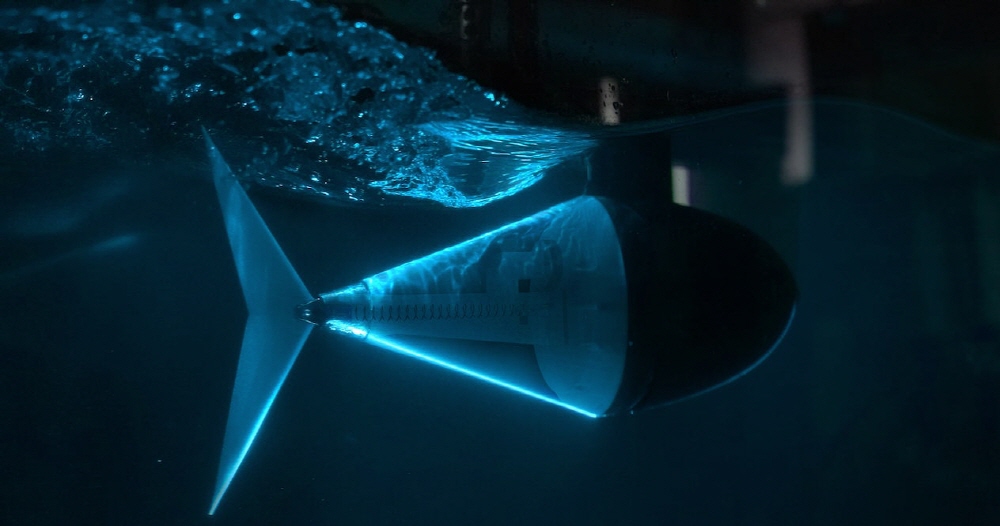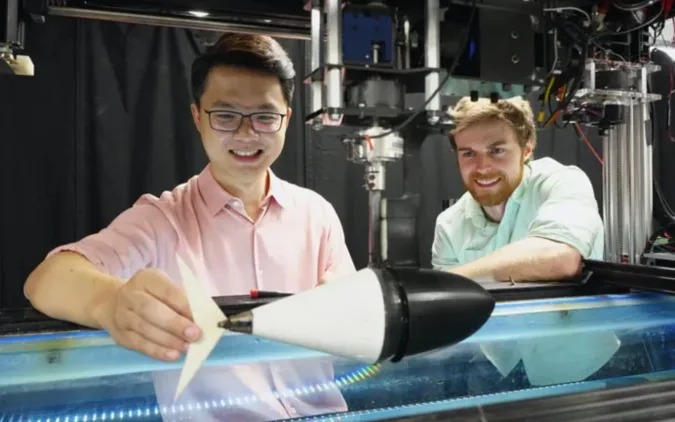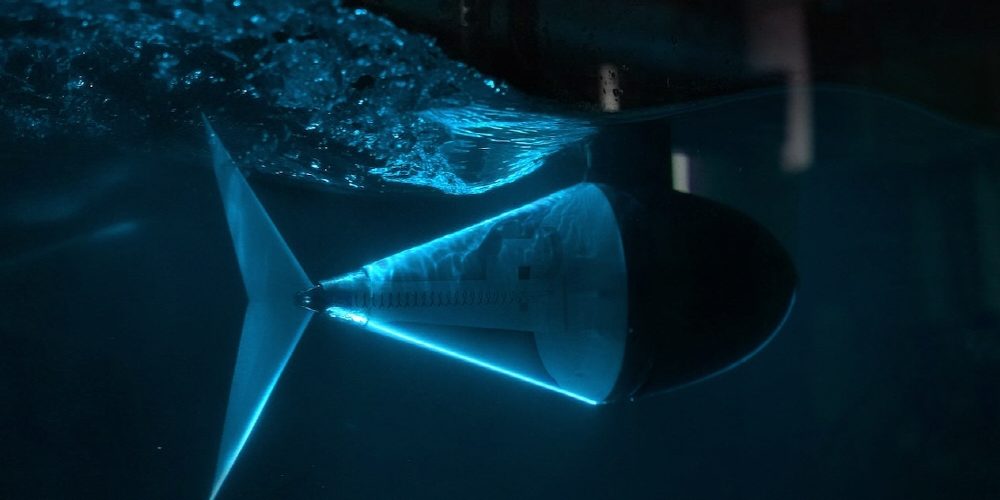
A research team at the University of Virginia has developed a tuna robot that can move its tail at a speed that can move its tail at the same speed as in real life. The maximum swimming speed is 2.4 km/h, which is about half the average walking speed of a human.
This robot was not built to swim quickly through the water, but to investigate how the fish would speed up or slow down as they swim. Tuna have tendons that run through their body, and by applying force to these tendons, they can swim their tails firmly and quickly.
The University of Virginia research team tried to reproduce the muscle and tendon system by combining mechanics and fluid mechanics. It is revealed that a specially designed robot with a tail has derived a structure to have the ability to speed up and down underwater like in real life.
The research team made a tuna robot that actually tries this structure and compared swimming by changing the tail hardness just like in real tuna while keeping the tail hardness constant. As a result, it was found that if you buy the hardness, you can control the speed more freely with almost half the energy consumption than in the case of certain cases.

The team explains tail hardness by analogy to a bicycle gear, and says that by shifting multiple gears, you can go faster and further with less energy. As the research team succeeded in experimenting with a robot the size of a mackerel rather than the size of a tuna, the research team made a larger or smaller tuna robot and proceeded with additional verification. It is also developing a method of propulsion by meandering fins, and plans to use the technology in future underwater unmanned aerial vehicles to further save energy and allow them to move quickly and freely.
Development of a robot that swims underwater isn’t just a recent start, for example, Carnegie Mellon University is attaching a screw to a snake robot that allows it to swim underwater. A research team at Harvard University has developed an insect-type robot that swims as it is, and improved it so that it can return to the air. Related information can be found here.


















Add comment